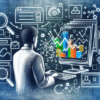Unlock Survival Skills: Master Fire Starting Techniques in Freezing Conditions
In the unforgiving landscape of winter, the ability to successfully start a fire in freezing temperatures transcends being a mere skill; it becomes a lifeline for survival. The biting cold and relentless winds of winter can pose serious threats, making fire essential for warmth, light, and cooking. As an avid survivalist, you recognize that creating a fire in icy environments requires specialized techniques and strategic planning. This comprehensive guide will explore the most effective methods for igniting flames in frigid conditions, empowering you with the knowledge and skills necessary to thrive in the wilderness during the harshest of winters.
Crucial Fire-Starting Gear: Equip Yourself for Winter Survival Success
As you prepare for your winter excursions into the wild, ensuring you have the right gear is paramount to enhancing your survival odds. A meticulously organized fire-starting kit can be the difference between warmth and exposure to the elements. Your kit should encompass these essential items to optimize your fire-starting capabilities:

a. Firestarters: Dependable tools such as waterproof matches, storm-resistant lighters, and fire-starting rods are vital for ensuring ignition in challenging conditions like wind and moisture. By having multiple reliable fire-starting options, you can boost your confidence in your ability to create a fire regardless of the obstacles you encounter.
b. Dry Tinder: The quest for dry tinder becomes particularly daunting in freezing temperatures. To combat this challenge, pack highly flammable materials such as birch bark, fatwood shavings, and cotton balls soaked in petroleum jelly. These items ignite quickly and drastically enhance your chances of successfully starting a fire, even when temperatures plummet below freezing.
c. Kindling: To establish a solid foundation for your fire, gather an assortment of dry sticks, twigs, and leaves. It is crucial that these materials are entirely dry, as any moisture can impede ignition and lead to frustration while attempting to spark a flame. Properly prepared kindling is essential for transitioning smoothly from tinder to a more robust fire.
d. Fuel: Finding dry firewood in chilling temperatures can be both challenging and time-consuming. Thus, having a sufficient supply of dry firewood at your disposal is essential for maintaining a steady fire for an extended period, allowing you to stay warm and comfortably cook food in the wilderness.
Strategically Choosing Your Fire Location: Maximize Efficiency and Safety
In extreme cold, carefully selecting the right location for your fire can provide significant benefits. Seek out sheltered areas, such as rock formations or dense shrubs, to minimize exposure to harsh winds. By positioning your fire near a natural windbreak, you not only reduce heat loss but also enhance the likelihood of maintaining a stable flame. Furthermore, consider constructing a small wind-resistant shelter using logs or a tarp to shield the fire from precipitation and help retain warmth, ultimately improving your comfort and safety while outdoors.
Mastering Layering Techniques for Building a Sustainable Fire: Create Lasting Flames
One of the most crucial techniques for successfully igniting a fire in cold conditions is mastering the art of layering your materials. To develop a fire that burns consistently, it’s imperative to utilize three foundational layers: tinder, kindling, and fuel. Here’s an in-depth look at each layer and its critical role in fire building:
a. Tinder: The first layer, known as tinder, comprises materials that ignite quickly and easily. Utilize fine, dry substances like grass, paper, or the aforementioned birch bark to ensure a robust initial flame. Having an adequate supply of tinder is essential for achieving successful ignition, particularly in cold environments.
b. Kindling: This layer consists of small sticks and twigs that catch fire rapidly and provide sustained heat. Gradually add kindling to your flame, ensuring there is ample space between pieces to promote airflow and encourage efficient combustion. This step is vital for transitioning from small flames to a larger, more stable fire.
c. Fuel: Once a steady flame is established, gradually introduce larger pieces of firewood. Ensure the wood is dry, as it will burn longer and generate more heat. Incrementally increase the size of the wood pieces, allowing the flames to strengthen before adding larger logs. This strategic approach to layering promotes a stable and sustainable flame.
The layering technique establishes a structured setup that allows flames to expand and sustain themselves effectively. Always ensure you have an adequate supply of each component readily accessible to facilitate a seamless transition from tinder to fuel, ensuring successful fire creation in challenging conditions.
Boost Your Fire Starting Success with Proven Aids and Techniques: Enhance Your Odds
In severely cold weather, utilizing additional fire-starting aids can drastically improve your chances of successfully igniting a fire against the challenges posed by low temperatures. Here are some effective methods that can enhance your fire-starting efforts:
a. Fatwood: Often regarded as nature’s firestarter, fatwood is resin-infused pine wood that ignites effortlessly and burns with intense heat. You can gather these naturally occurring sticks from fallen pine trees or purchase them from outdoor supply stores. A few pieces of fatwood can significantly increase your likelihood of successfully starting a fire in extremely cold conditions.
b. Alcohol-Based Hand Sanitizer: Surprisingly effective, alcohol-based hand sanitizer is highly flammable and works as an accelerant. Applying a small amount to your tinder or kindling can help ignite a fire rapidly, even in damp conditions, simplifying the fire-starting process and ensuring your warmth when it matters most.
c. Char Cloth: Char cloth is specially prepared fabric that ignites easily from sparks, making it an excellent tool for starting fires using flint and steel or a lighter in challenging situations. Its lightweight and portable nature makes it an ideal addition to your fire-starting kit, ensuring you are always prepared for fire ignition.
By incorporating these fire-starting aids into your cold-weather toolkit, you can significantly enhance your chances of success when facing particularly daunting conditions, allowing you to adapt effectively to your environment.
Discover Effective Fire Techniques Tailored for Cold Weather: Excel in Your Skills
As a committed survivalist, consistently refining your skills is vital for your success. Here are two fire techniques that shine in cold weather conditions:
a. Swedish Torch: Also known as a Canadian Candle or Finnish Fire Log, the Swedish Torch is an exceptionally effective fire-starting method. This technique provides a stable and long-lasting flame, making it ideal for combating winter chills. To create a Swedish Torch, find a log about knee-height and cut several vertical slits along its length. Place tinder in the slits and ignite it. The log serves as a consistent fuel source, allowing the flame to endure for an extended period, ensuring warmth and safety.
b. Dakota Fire Hole: In the face of strong winds, the Dakota Fire Hole method is incredibly effective. This technique involves digging a hole and tunneling horizontally underground to create an airflow vent. This design harnesses wind to enhance airflow, resulting in a more efficient fire that is less likely to be disrupted by gusts. Moreover, the Dakota Fire Hole method effectively reduces visible smoke while conserving fuel, making it an excellent choice for discreet fire building.
Regardless of the method you choose, always prioritize safety and responsible fire management to minimize risks and ensure a successful fire-starting experience.
Successfully igniting a fire in cold weather demands careful planning and execution. By following these steps—preparing a reliable fire-starting kit, selecting an appropriate location, mastering layering techniques, utilizing fire-starting aids, and employing specific fire strategies—you will markedly enhance your chances of success. Remember, practice is key, so consistently train to refine your skills and increase your confidence. With these essential tactics for igniting fires in freezing conditions in your arsenal, you’ll be well-equipped to face even the harshest winters nature has in store. Stay warm, prioritize your safety, and keep the flames of survival alive!
The post Fire Starting Methods for Survivalists in Cold Weather appeared first on Survival Bite.
The Article Fire Starting Techniques for Cold Weather Survival Was Found On https://limitsofstrategy.com
The Article Cold Weather Survival: Essential Fire Starting Techniques First Appeared ON
: https://ad4sc.com










Comments are closed